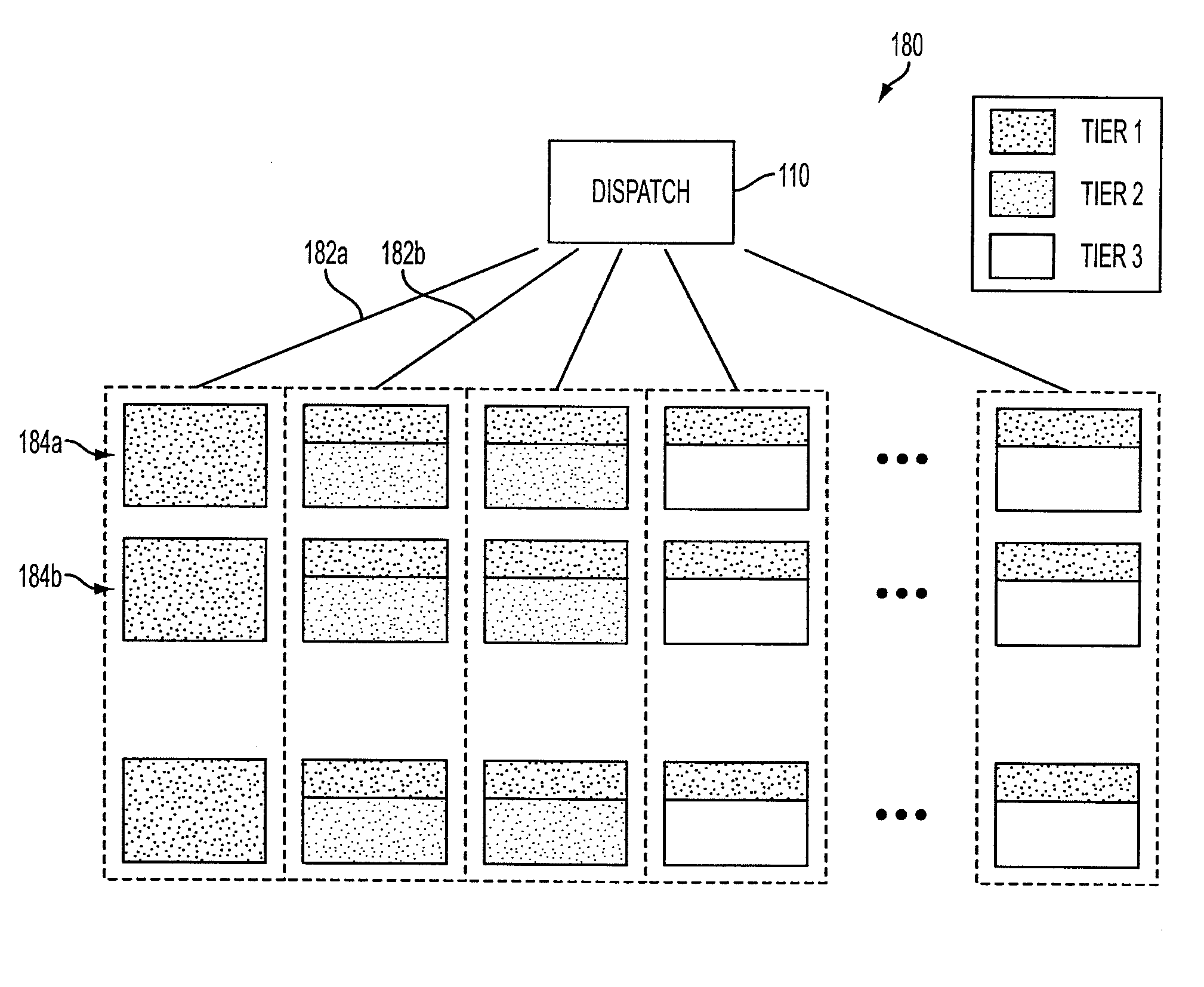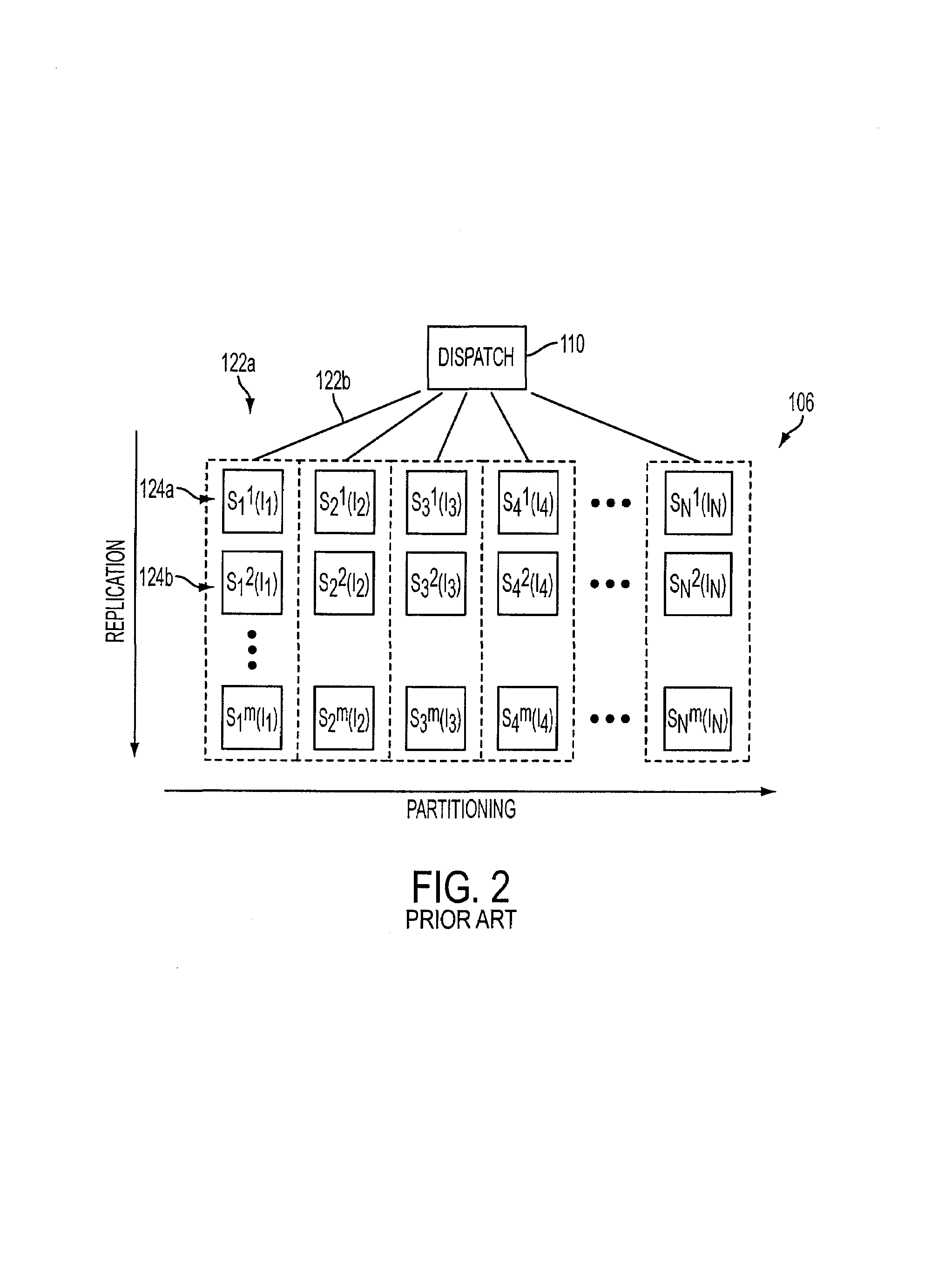Search engine with hierarchically stored indices
a search engine and hierarchical storage technology, applied in the field of search engines, can solve the problems of constant challenge in response to user queries, difficulty in maintaining a working search engine, and the cost of search execution typically corresponds directly to the size of the index searched, and achieves the effect of higher value contex
- Summary
- Abstract
- Description
- Claims
- Application Information
AI Technical Summary
Benefits of technology
Problems solved by technology
Method used
Image
Examples
Embodiment Construction
[0028]Referring to FIG. 3, there is shown a search engine 90 in accordance with an embodiment of the invention. A source of information such as the Internet 100 or other collection of files or documents such as an enterprise or organization network, is crawled by a crawler 102 which, in turn, stores data in a database 108 correspond to the source of information. A document mapping algorithm 114 then maps the documents into tiers as discussed below. An indexer 105, controlled by a processor 111, builds a plurality of sub-indices based on the mapped documents in database 108. A plurality of search nodes in a search node cluster 160 each store respective sub-indices and are each enabled to search their respective sub-indices. A dispatcher 110 sends queries from a user 112 to search node cluster 160 as discussed below.
[0029]Recent research yields that there is a skewed distribution of the most popular queries for information on the Internet. For example, most queries (50%–80%) are withi...
PUM
 Login to View More
Login to View More Abstract
Description
Claims
Application Information
 Login to View More
Login to View More - R&D
- Intellectual Property
- Life Sciences
- Materials
- Tech Scout
- Unparalleled Data Quality
- Higher Quality Content
- 60% Fewer Hallucinations
Browse by: Latest US Patents, China's latest patents, Technical Efficacy Thesaurus, Application Domain, Technology Topic, Popular Technical Reports.
© 2025 PatSnap. All rights reserved.Legal|Privacy policy|Modern Slavery Act Transparency Statement|Sitemap|About US| Contact US: help@patsnap.com



